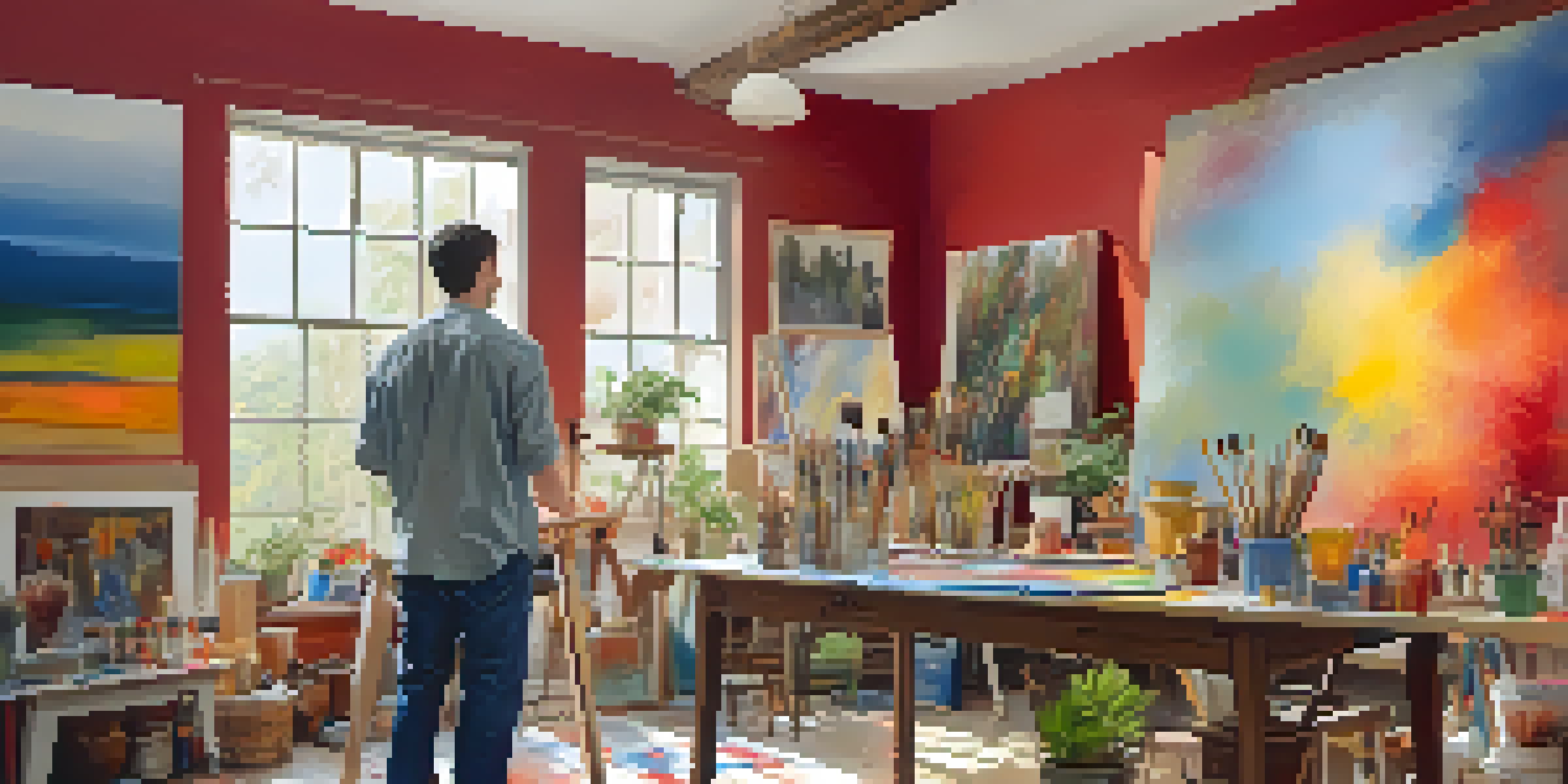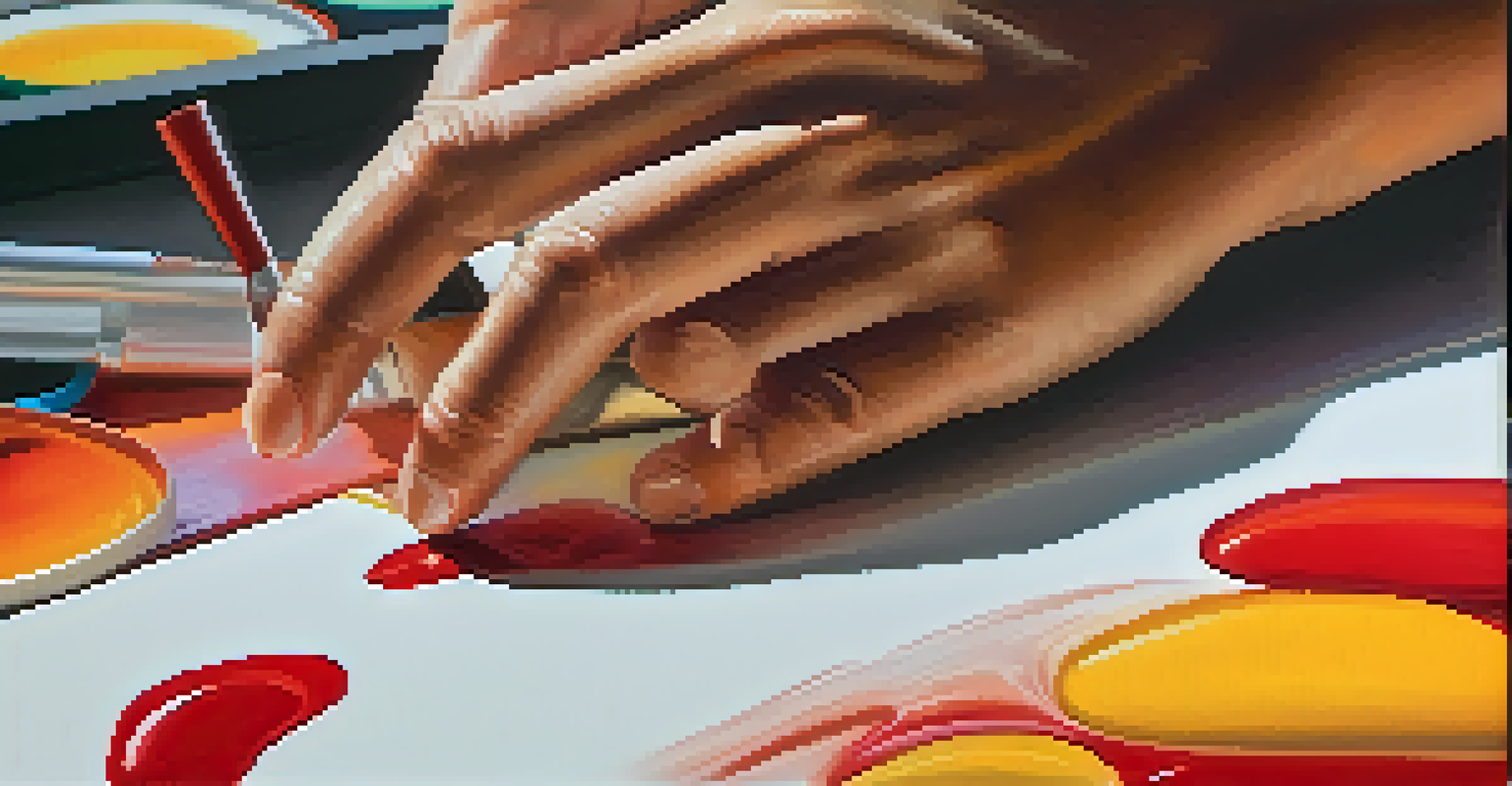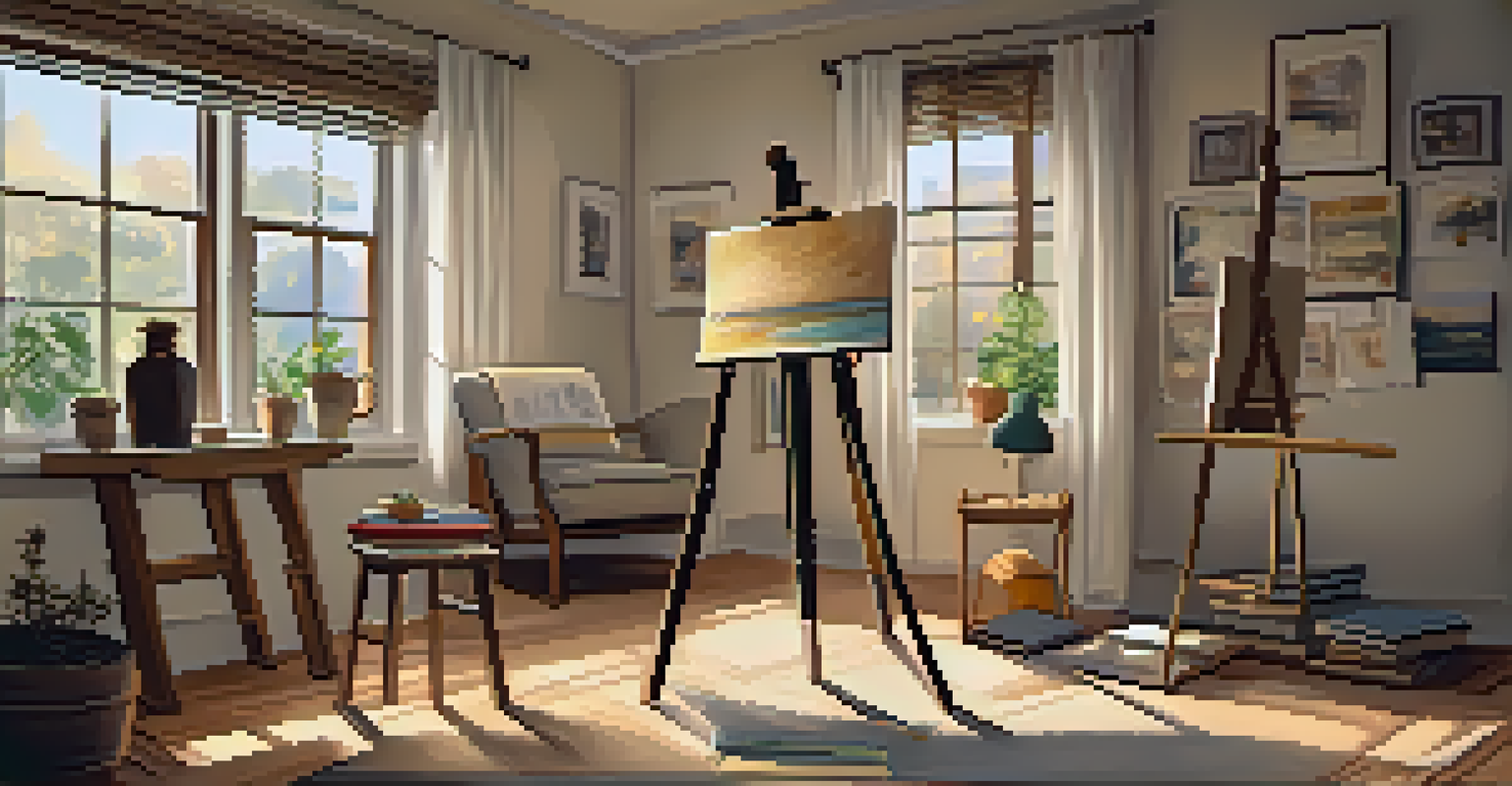The Therapeutic Effects of Painting on Mental Well-being

Understanding Art Therapy and Its Benefits
Art therapy is a creative approach that uses artistic expression to promote healing and mental well-being. It allows individuals to process their emotions through visual art, making it a powerful tool for self-discovery and self-expression. By engaging in painting, people can often uncover feelings that may be difficult to articulate verbally.
Art enables us to find ourselves and lose ourselves at the same time.
The therapeutic benefits of painting can lead to reduced anxiety, improved mood, and increased self-esteem. This form of therapy provides a safe space for individuals to explore their feelings without judgment. It’s fascinating how a brushstroke can serve as a release for pent-up emotions.
Moreover, art therapy isn’t just for those with mental health issues; anyone can benefit from the calming effects of painting. Whether you’re a seasoned artist or someone who has never picked up a brush, the act of creating can foster a sense of accomplishment and joy.
How Painting Helps Reduce Stress and Anxiety
Engaging in painting can be a form of mindfulness, drawing your attention away from stressors and into the present moment. This focus can help quiet the mind, allowing you to escape the daily grind and immerse yourself in creativity. As you apply paint to canvas, it's like giving your worries a colorful backdrop to fade away.

Research suggests that the simple act of painting can lower cortisol levels, a hormone associated with stress. When you lose yourself in the rhythm of brush strokes, it can create a meditative state that promotes relaxation. This is why many people turn to art when they need a break from life’s pressures.
Art Therapy Enhances Well-Being
Engaging in art therapy promotes healing and mental well-being through creative expression.
Additionally, painting encourages a sense of control and achievement. Completing a piece of art can instill pride and fulfillment, which counteracts feelings of helplessness often tied to anxiety. Just as a gardener nurtures their plants, painting nurtures your emotional landscape.
The Connection Between Color and Emotions
Colors evoke emotions, and this connection can be harnessed in painting to explore feelings. For instance, warm colors like red and yellow can evoke energy and happiness, while cool colors like blue and green can promote calmness and introspection. Understanding this relationship allows artists to express their emotional states more vividly.
Creativity takes courage.
When you choose colors for your artwork, you might find that certain hues resonate with your current mood. This intuitive choice can lead to deeper self-awareness and emotional release. Think of color as the language of your emotions, speaking volumes without uttering a word.
Furthermore, experimenting with color can help individuals process complex feelings. For example, someone feeling sad might choose darker tones to illustrate their mood, allowing them to confront and express their feelings. Painting thus becomes a dialogue between the artist and their emotions.
Creating a Safe Space for Expression
One of the most valuable aspects of painting is its ability to create a safe, non-judgmental space for expression. In this environment, individuals can let their guard down and express their thoughts and feelings freely. The canvas becomes a confidant, absorbing everything that needs to be shared.
This safe space fosters vulnerability, which is crucial for emotional healing. When people feel secure in their expression, they can explore deeper issues without fear of criticism. It's a reminder that the journey of self-exploration can be both personal and liberating.
Color Reflects Emotional States
The choice of colors in painting serves as a powerful way to explore and express one's emotions.
Moreover, sharing artwork with supportive peers or therapists can deepen connections and reinforce feelings of acceptance. The act of sharing can provide validation and understanding, making the healing process even more profound.
The Role of Creativity in Personal Growth
Creativity is a powerful catalyst for personal growth, and painting is one of the most accessible forms of creative expression. Through painting, individuals can explore their identities, beliefs, and desires, leading to greater self-discovery. Each brushstroke can symbolize a step on the journey of understanding oneself better.
Moreover, creativity encourages problem-solving and innovation, skills that can be applied to everyday life. When you paint, you learn to navigate challenges—whether it’s mixing the right colors or deciding on a composition. This mindset can overflow into other areas, fostering resilience and adaptability.
As you embrace painting as a form of self-exploration, you may find that it opens doors to new possibilities. This growth mindset not only enhances mental well-being but also enriches your life experiences.
Finding Community Through Shared Artistic Endeavors
Participating in painting classes or workshops can provide a sense of belonging and community. Being part of a group where everyone shares a common interest in art fosters connections and friendships. This social aspect can be incredibly beneficial for mental well-being, as it combats feelings of isolation.
Moreover, sharing experiences and techniques in a group setting can enhance creativity. The exchange of ideas can inspire new perspectives and artistic approaches, making the painting journey even more enjoyable. Think of it as a potluck of creativity, where each participant brings something unique to the table.
Community Boosts Creative Growth
Participating in group painting activities fosters connections and enhances the creative experience.
Additionally, community art projects can have a profound impact on mental health. Collaborating on a large mural or community piece allows individuals to contribute to something bigger than themselves, promoting a sense of purpose and shared achievement.
Incorporating Painting into Your Daily Routine
Integrating painting into your daily routine doesn’t have to be daunting. Start small—set aside just 10 to 15 minutes a day for creative expression. Whether it’s doodling in a sketchbook or working on a canvas, creating a habit can help you reap the benefits of painting regularly.
Consider keeping an art journal where you can experiment with colors and techniques without the pressure of creating a masterpiece. This journal becomes a space for exploration and reflection, capturing your thoughts and feelings over time. It’s like a personal time capsule of your emotional journey.

Lastly, don’t forget to celebrate your progress, no matter how small. Each painting is a step towards better mental well-being, and acknowledging your efforts can enhance motivation. Just as plants need water to thrive, your creativity needs nurturing to flourish.